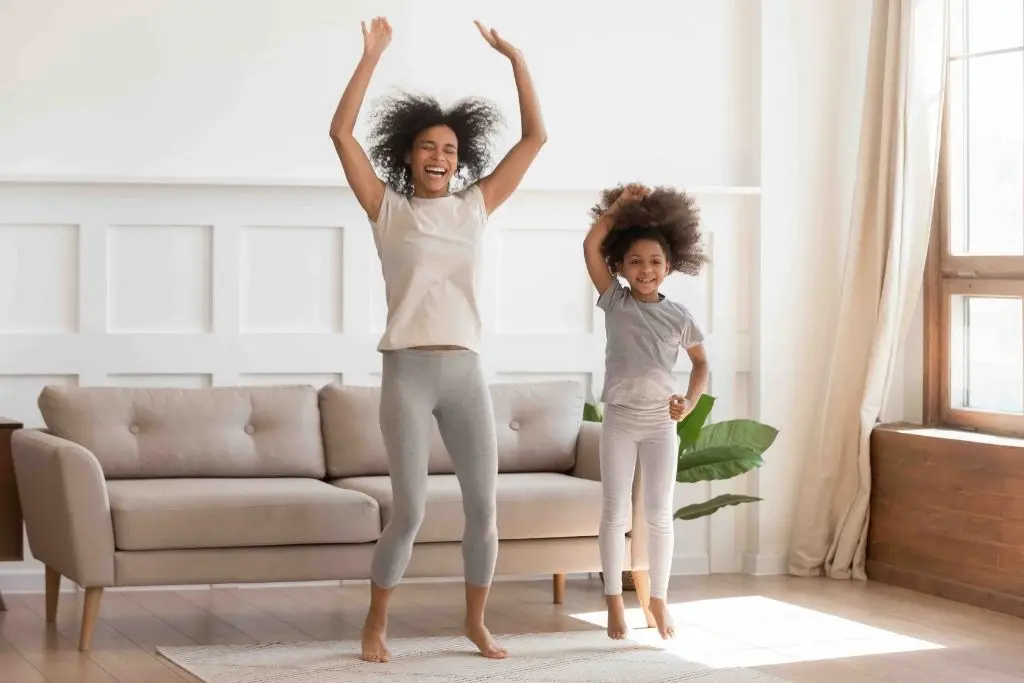It’s Time To Talk About The Gender Exercise Gap

May 25, 2022 - Updated May 25, 2022

Here at Sweat, our purpose is to empower women through fitness, and we know all too well that there’s no such thing as a “girl” push-up. There are just push-ups.
The women that make up the Sweat Community are some of the strongest women we know - inside and out.
But while they’re breaking down barriers and smashing PBs every day, we also know there’s a very real gender gap many women experience when it comes to getting their workouts in, and it’s something that often unfairly holds women back when it comes to their fitness.
Recent research from the Australian National University has highlighted that in heterosexual couples, men tend to “borrow” time from their female partners, allowing them to exercise more regularly than their partners.
The author Professor Lyndall Strazdins emphasised this is a major issue for women’s health and fitness.
"Every hour a woman works takes away from her free time but that doesn't happen to male counterparts. Men work long hours and seem to borrow time from their female partners to fit in exercise,” she said when the research was released.
While this problem appears to be unique to those in heterosexual relationships, with researchers highlighting non-binary and same-sex couples are more likely to negotiate time use, we know it’s not just finding the time to exercise that can contribute to this gap.
And the gender exercise gap doesn’t just impact those who live with their partner, with earlier research from Stanford University that analysed step count disparities finding women tend to get less physical activity than men.

The gender exercise gap starts early
While the gender exercise gap appears to widen when women live with a male partner, it’s actually a phenomenon that starts in childhood.
In 2016, the UK-based charity Women In Sport surveyed 26,000 students from across 138 secondary schools. They wanted to understand the differences and similarities in activity levels and attitudes towards sports across both genders.
They found secondary school-aged boys tended to enjoy physical activity more than their female classmates, with the pressure of schoolwork and lower confidence creating a bigger barrier to entry for female students to enjoy physical activity.
Furthermore, the girls reported an increasing dissatisfaction with their body image as they got older, pointing to the need for developing self-confidence to be part of a school’s approach to physical education to ensure both girls and boys can enjoy the benefits of being physically active.

Concerns about safety also influence how - and when - women exercise
While relationship dynamics or falling out of love with physical activity during adolescence might impact how women choose to work out, heightened concerns about safety can also understandably play a part.
YouGov America research points to 25% of women reporting they would never walk alone at night (compared to 8% of men), with a YouGov survey of British women pointing to similar concerns about safety amongst women in the United Kingdom.
These fears limit the hours in which women feel safe exercising in public spaces, with 50% of women in the UK choosing to exercise less during winter due to the darker mornings and evenings.
It’s not just outdoor spaces that women often feel unsafe and uncomfortable working out in.
Walking into a gym - especially one that seems to be built around male fitness experiences - can be a particularly intimidating and in some cases, an unsafe experience for some women.
A survey of 890 women conducted by the organisation Fit Rated explored women’s experiences working out, finding almost 71% of respondents had an interaction or experience at the gym that left them feeling uncomfortable.
These negative experiences led to two in three women choosing to work out somewhere else.

Tips for overcoming the gender exercise gap
While there’s no easy solution when it comes to solving this gap (and it’s not something that will happen overnight, with change needed on a systemic and societal level), there are some practical steps you can take to make your fitness experience a more positive one.
If you’re the parent of a daughter, find ways to make movement a fun and positive experience from an early age. This could involve anything from taking her along to see some incredible female athletes in action to encouraging her to take up a new sport while instilling her with a deep appreciation for all the amazing things her body can do.
Ensure you and your children are surrounded by body-positive role models. If you’re the parent of a teen, encourage them to follow people that will empower them to be the best version of themselves.
If you’re a childhood educator, Women In Sport recommends finding ways to make physical education an activity relevant to the girls in your class.
If you feel like you don’t have time for fitness within your relationship (but your partner does!), sit down with them and discuss your wants and needs and try to find a balance. For example, you might take on the morning routine while he gets his early run in, then he looks after bath-time with the kids so you can make your favourite 6.30 pm yoga class. Relationships are all about balance and compromise.
Never feel like taking time for yourself and the things that make you feel good are selfish - carve out those appointments with yourself to move your body in a way that restores and energises you.
Grab your workout buddy! Whether you work out together at home, outdoors or in the gym, you can help keep each other accountable, safe and encourage each other.
Love working out in the gym but feeling gym-timidated walking through those doors? Find a gym that you feel comfortable, confident and safe in. If you prefer working out in a women-only space, that's okay too! There are plenty of gyms that cater to women with dedicated roms.
There are so many ways to get a great workout in from home - and you don't even need equipment to get started. If you work out with the Sweat app, update your equipment profile and take a look through all of the at-home options available.
If you prefer exercising outside but don’t have any free time during daylight hours, you could try negotiating some altered working hours with your boss (such as a longer lunch break) so you can get an outdoor workout in while feeling safe and comfortable in your surroundings.
Have you been impacted by the gender exercise gap? Join in the conversation on the Sweat forum and let us know how it’s changed your approach to exercise.

A more empowered you starts with Sweat, and our editorial team is here to bring you the latest fitness tips, trainer recommendations, wellbeing news, nutritional advice, nourishing recipes and free workouts.
* Disclaimer: This blog post is not intended to replace the advice of a medical professional. The above information should not be used to diagnose, treat, or prevent any disease or medical condition. Please consult your doctor before making any changes to your diet, sleep methods, daily activity, or fitness routine. Sweat assumes no responsibility for any personal injury or damage sustained by any recommendations, opinions, or advice given in this article.
Wellbeing